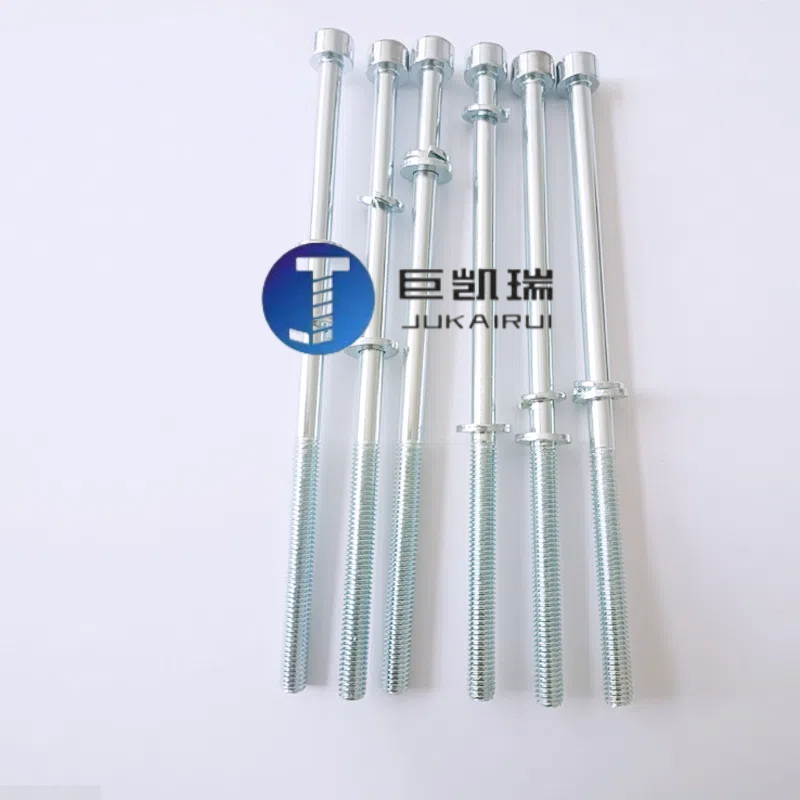Release time:2020-01-16 18:44 Browse:

When discussing the practical problem of how to calculate the length of the extension screw, we first need to clarify several core concepts: the basic structure of the screw, the special purpose of the extension screw, and the key factors affecting the length of the screw. This is not only a simple measurement or calculation process, but also an in-depth understanding of screw application scenarios, material mechanics and installation requirements.
1. Understand the basic structure of screws
The screw, as a kind of fastener, is mainly composed of a head, a threaded rod part and an end (such as a pointed point, a flat end or a perforated end). The head is used to provide a torque of rotation, and the threaded rod part is fastened through a spiral groove to fit with the threaded hole of the nut or other fixed object. For extension screws, the most significant feature is that the length of the threaded rod is much longer than that of ordinary screws to meet the installation needs of specific scenarios, such as connecting two parts with a large depth, or in the case of reserving space for other operations.
Second, the key factors to determine the length of the extension screw
1. ** Installation requirements ** : First of all, specify the installation depth of the extension screw. This usually depends on the thickness of the part to be connected, the need for reserved space, and the possible range of installation error.
2. ** Thread specifications ** : Screws of different specifications have different pitch (that is, the axial distance of the thread per rotation). In the calculation, it is necessary to determine the axial length of each circle of thread according to the thread specification of the selected screw.
3. ** Tightening torque ** : Although it does not directly affect the overall length of the screw, considering the tightening torque helps determine whether the screw is long enough to resist the expected load, which may indirectly affect the choice of length.
4. ** Safety margin ** : In order to ensure the reliability and stability of the installation, a certain safety margin is usually increased on the basis of the calculated theoretical length.
3. Specific calculation steps
1. ** Measure the thickness of the connected parts ** : Use an accurate measuring tool (such as a vernier caliper, micrometer or laser rangefinder) to measure the total thickness of the two parts that need to be joined by screws.
2. ** Determine the required penetration depth ** : According to the installation requirements, determine the depth of the screw needs to penetrate the connected part. This usually depends on design requirements, material characteristics and fastening requirements.
3. ** Calculate threaded rod length ** : Based on the total thickness measured and the required penetration depth, plus the length of at least one complete thread as the initial insertion depth (to ensure that at least one thread is fully engaged), plus the safety margin (generally determined according to experience or standard regulations), to obtain the total length of the threaded rod part.
4. ** Consider the length of the head and end ** : Although the length of the head and end is usually not directly included in the "extension" part, it is still necessary to consider their impact on the overall size when selecting the total length of the screw to ensure that the screw can be smoothly installed and meet the design requirements.
5. ** Check standards or consult professionals ** : There may be standards or recommended values for lengthening screw lengths for specific industries or applications. In times of uncertainty, it is wise to consult the relevant standards or a professional.
### IV. Precautions
- ** Accuracy requirements ** : In the calculation and measurement process, it is necessary to maintain high precision to avoid installation problems caused by dimensional errors.
- ** Material compatibility ** : Consider the material compatibility of the screw and the part to be connected to ensure fastening effect and durability.
- ** Environmental factors ** : In some extreme environments (such as high temperature, low temperature, wet or corrosive environments), it may be necessary to choose a special material or coated extension screw.
- ** Installation tools and skills ** : Choosing the right installation tools and mastering the correct installation skills are equally important, they directly affect the installation effect and service life of the screws.
In summary, the calculation of the length of the extension screw is a comprehensive consideration of installation requirements, thread specifications, tightening torque, safety margin and other factors. Through accurate measurement, reasonable calculation and attention to relevant matters, we can ensure that the selected extension screws meet the installation requirements and have sufficient reliability and durability.
# Lengthening screws # Lengthening bolts # Lengthening outer hex screws # Lengthening inner hex screws # fasteners

